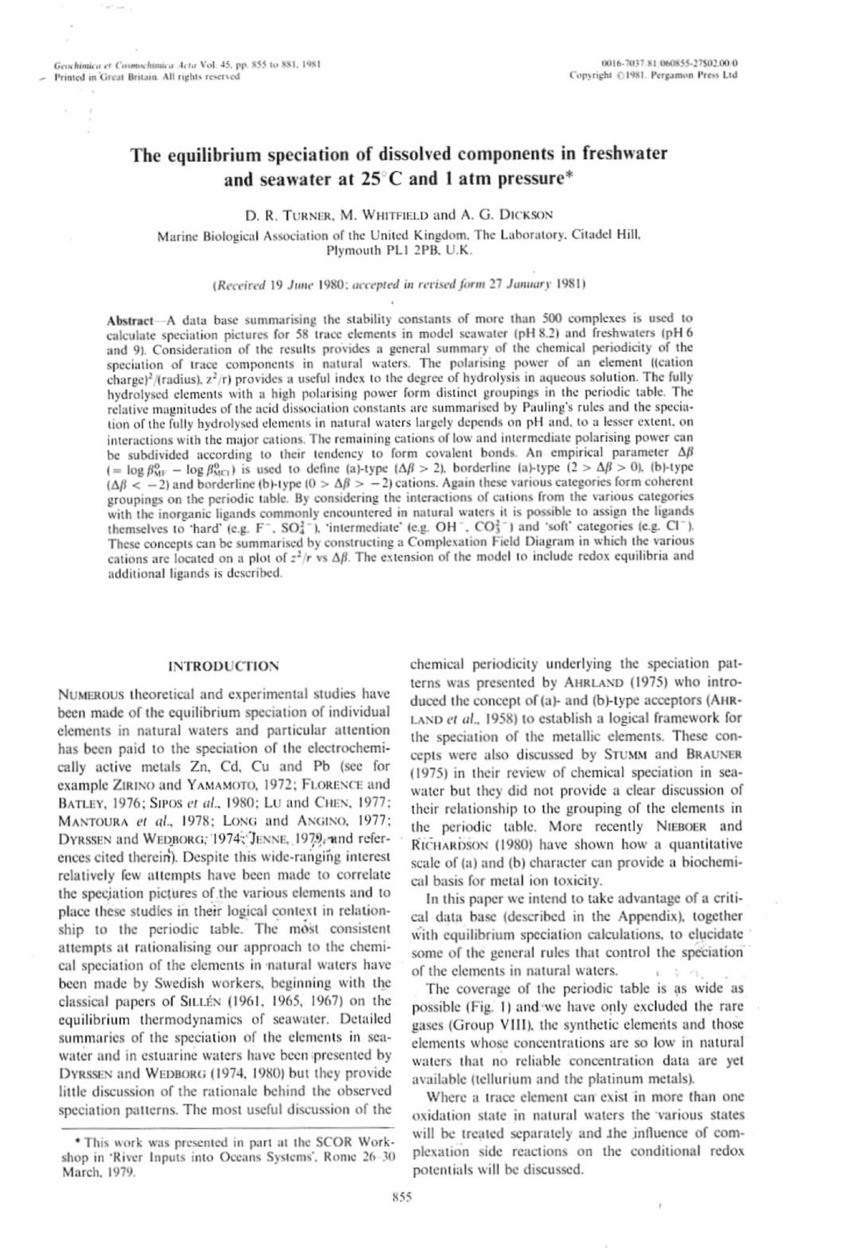Journal Article
AccessThe Equilibrium Speciation of Dissolved Components in Freshwater and Seawater at 25°C and 1 Atm Pressure
A data base summarising the stability constants of more than 500 complexes is used to calculate speciation pictures for 58 trace elements in model seawater (pH 8.2) and freshwaters (pH 6 and 9). Consideration of the results provides a general summary of the chemical periodicity of the speciation of trace components in natural waters. The polarising power of an element ((cation charge)2/(radius), z2/r) provides a useful index to the degree of hydrolysis in aqueous solution. The fully hydrolysed elements with a high polarising power form distinct groupings in the periodic table. The relative magnitudes of the acid dissociation constants are summarised by Pauling's rules and the speciation of the fully hydrolysed elements in natural waters largely depends on pH and, to a lesser extent, on interactions with the major cations. The remaining cations of low and intermediate polarising power can be subdivided according to their tendency to form covalent bonds. An empirical parameter Δβ(= logβ0MF − log β0MCl) is used to define (a)-type (Δβ > 2), borderline (a)-type (2 >Δβ > 0), (b)-type (Δβ < −2) and borderline (b)-type (0 >Δβ > −2) cations. Again these various categories form coherent groupings on the periodic table. By considering the interactions of cations from the various categories with the inorganic ligands commonly encountered in natural waters it is possible to assign the ligands themselves to 'hard' (e.g. F−, SO42−), 'intermediate' (e.g. OH−, CO2−3) and ‘soft’ categories (e.g. Cl−). These concepts can be summarised by constructing a Complexation Field Diagram in which the various cations are located on a plot of z2/r vs δβ. The extension of the model to include redox equilibria and additional ligands is described.
Publisher - Elsevier
Subjects - Water, Marine
Citation: Turner DR, Whitfield M, Dickson AG. 1981. The Equilibrium Speciation of Dissolved Components in Freshwater and Seawater at 25°C and 1 Atm Pressure. Geochim. Cosmochim. Acta; 45(6):855-881 http://dx.doi.org/10.1016/0016-7037(81)90115-0
